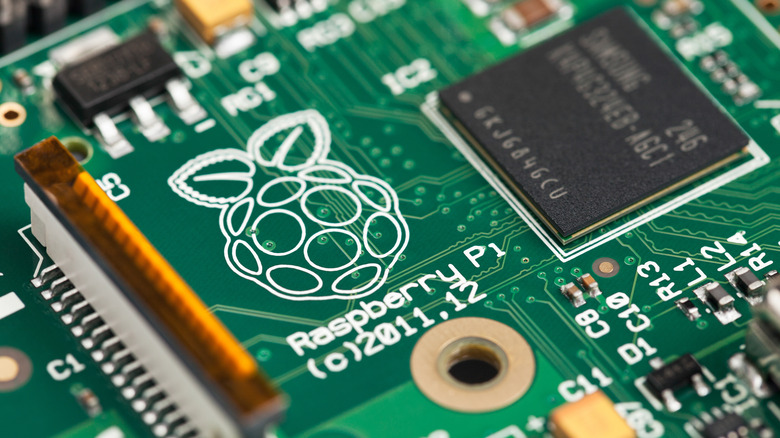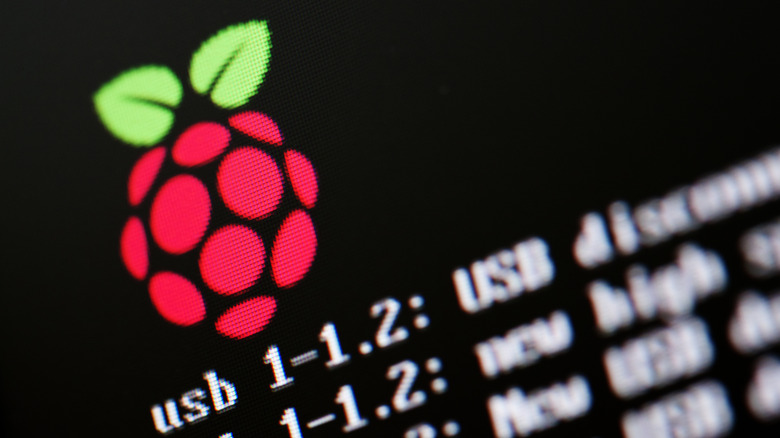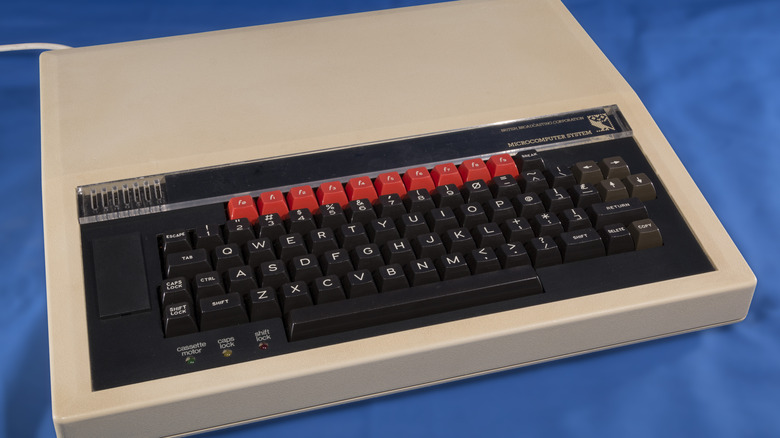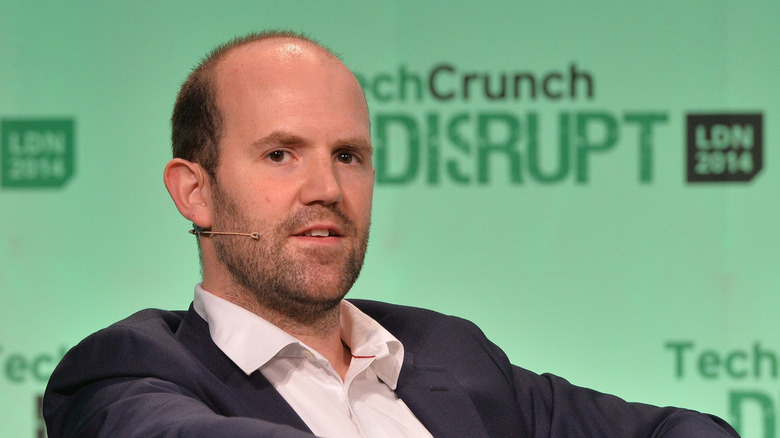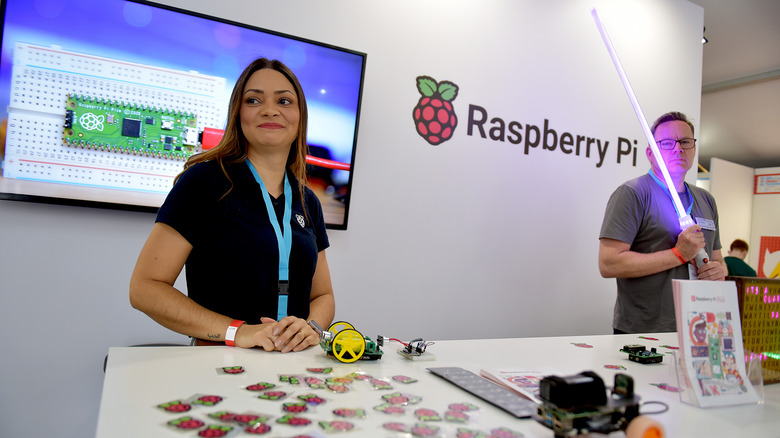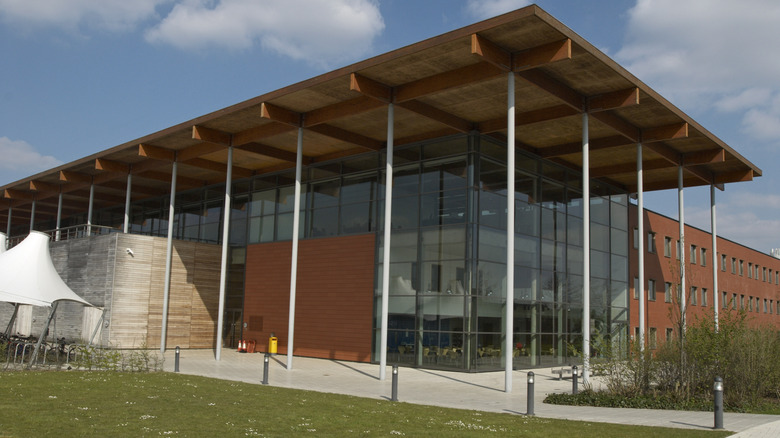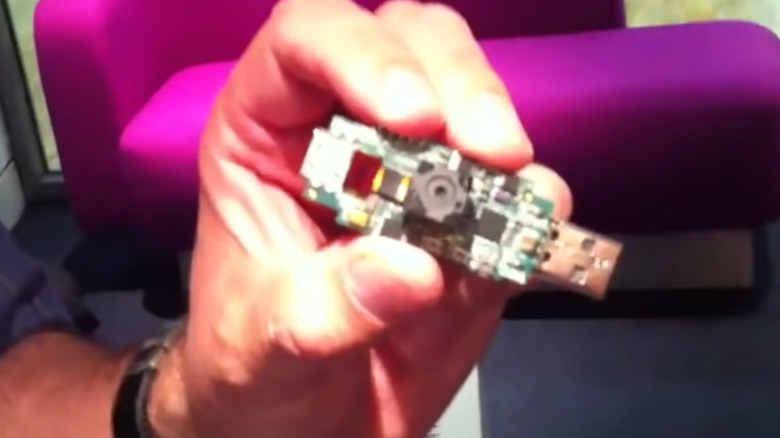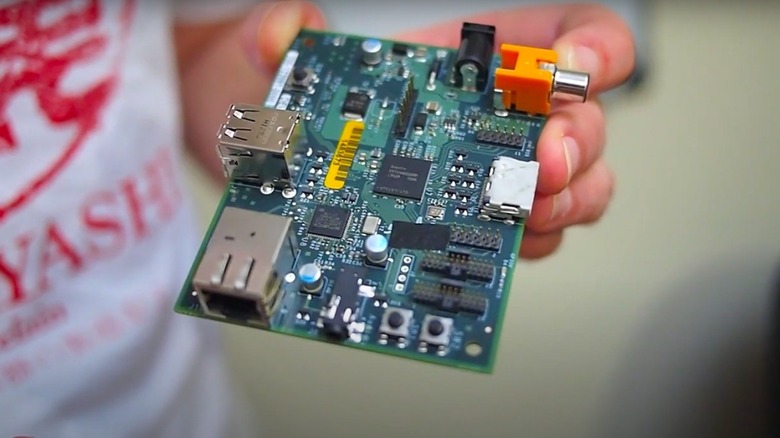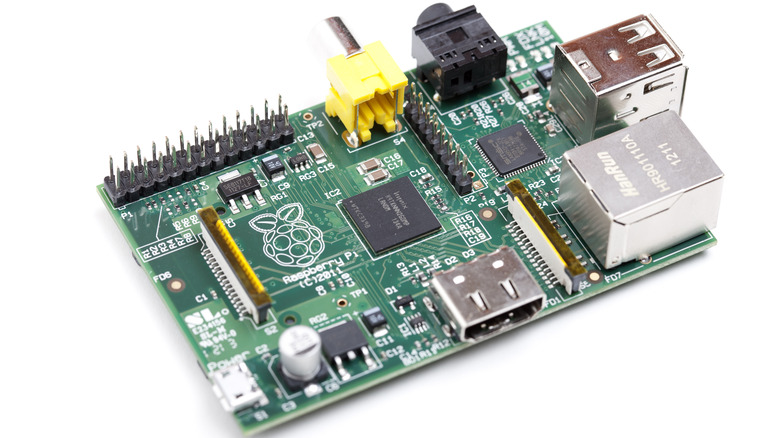The Evolution Of Raspberry Pi: From Prototype To Single-Board Computing Workhorse
When you think of compact, single-board computers, most casual and even intermediate tech hobbyists will likely think of the Raspberry Pi. Although it isn't the only great single-board computer available for purchase, the Pi is still the most recognizable example of the breed. It continues to feature heavily in embedded systems, home automation, and maker projects of all shapes and sizes, and it has a level of name recognition that other single-board computers simply can't match.
If you have an idea for a computing device, you'll likely be able to use a Raspberry Pi to realize it. Want to build a home media center? Get a Raspberry Pi. Interested in assembling a DIY drone to play around with? Again, a Raspberry Pi will do a brilliant job as the brains of your whole project. You can even use a Raspberry Pi to help you sleep better at night. The possibilities are endless, and it's all thanks to the computer's versatility and affordability.
But how did we get here? How did the Raspberry Pi grow from a humble idea into the market-defining single-board computer we all know and love? And who were the brains behind this iconic — and incredibly useful — device? Let's take a trip down memory lane and explore how the Raspberry Pi came to be.
What is Raspberry Pi?
Before our history lesson, let's clarify what Raspberry Pi is (and isn't). Raspberry Pi refers to two entities: the hardware and the foundation that shares its name.
The hardware is the single-board computer most are familiar with — that green, credit card-sized printed circuit board (PCB) you can find at the heart of many a hobbyist's electronics project. As the term "single-board computer" suggests, the Pi is a full-featured computer like your desktop or laptop, just condensed onto a single circuit board. It has the CPU, RAM, storage, and connectivity (like Ethernet) on one board, making it an all-in-one solution perfect when low cost and compactness are essential. As of 2024, there have been five main versions of the Raspberry Pi, not including minor revisions and offshoots. All Raspberry Pi computers run Linux, with several distros available to suit users' needs.
The Raspberry Pi Foundation, on the other hand, is a charity based in the U.K. founded by the same individuals who invented the Raspberry Pi computer (more on this later). The foundation was registered in 2009 to promote interest in computer science among children and young adults. The foundation does this in various ways, including supporting initiatives such as Code Club and CoderDojo. Both are global programs that encourage school-age kids and teenagers to learn to code, with or without Raspberry Pis.
Of micros and men
The Raspberry Pi has spiritual roots in British microcomputers of the 1980s, most notably the Acorn BBC Micro, which Raspberry Pi inventor Eben Upton discovered at school and owned for a long time in the late 1980s. The Micro was the computer of choice for a BBC initiative called the Computer Literacy Project, which ran from 1980 to 1989. It aimed to educate the public about microcomputers (as they were known back then) through TV shows and by distributing computers — the BBC Micro — to schools via a government-backed Computers for Schools initiative.
The BBC Micro was an 8-bit machine with a 2 MHz 6502A CPU and 16 or 32K of RAM. Unlike modern computers, the Micro didn't have an operating system as we know it today. To do anything on the Micro, you had to input code in a programming language called BBC BASIC. This meant that even playing a video game required you to type in lines of code yourself.
Tedious as it was, many credit the Micro (and its competitors) with inspiring them to experiment with computers and learn how to code, often leading to careers in software development or computer science. Upton is no different, telling TechSpot: "I loved to program on my own ... These machines sort of tempted you into programming."
[Featured image by simon.inns via Wikimedia Commons | Cropped and scaled | CC BY 2.0]
Initial experiments
Aiming to resurrect the hands-on coding experience of his youth, Eben Upton began experimenting with building cheap, simple computers in the mid-2000s. He started after completing his doctorate in computer science at the University of Cambridge and completed his first working prototype in 2006. The prototype was expectedly a far cry from what we now know as the Raspberry Pi, built as it was on stripboard using discrete chips and wire, all through-hole and soldered by hand. However, it was Upton's first successful attempt at creating a DIY-friendly computer that resembled the BBC Micro, right down to a similar level of performance.
The 2006 prototype featured an Atmel ATmega644 microcontroller clocked at 22.1MHz, with 512K of SRAM to store data and graphics information. It generated a 320 x 240 video signal and was incredibly underpowered, even by the first-generation Raspberry Pi standards. It was only capable of primitive 3D graphics (above), the sort you'd find on 1980s computer games. The 2006 prototype also didn't have an operating system or support any high-level programming languages like Python, relying instead on custom software designed specifically for the hardware.
Upton chose not to develop the 2006 prototype further, feeling that the perks of DIY assembly weren't worth the trade-offs in performance and user-friendliness. But it was a start — the all-important first step in a journey that would only come to fruition six years later.
The journey begins
Things went quiet for a few years before picking back up in 2008. That year, several individuals involved with the University of Cambridge's Computer Laboratory (now known as the Department of Computer Science and Technology), including Eben Upton, began discussing the idea of recreating the BBC Micro via email that year. This wasn't a notion that came out of thin air, of course: Upton recalls that it was a response to news that MIT was planning to clone the Apple II (plans that never came to fruition, as far as we can tell).
As Upton told the U.K.'s Centre for Computing History in a video interview, he and his colleagues wanted to do something similar because they felt that "the Computer Lab is where computers come from." This sense of challenged pride likely came from the university's history with the Electronic Delay Storage Automatic Calculator (EDSAC), which Maurice Wilkes and colleagues built in the University of Cambridge Mathematical Laboratory. The EDSAC is often hailed as one of the first-ever general-purpose computers.
It helped that Upton had built a second prototype by the time these discussions took place. While this prototype still wasn't a full-fledged single-board computer, its combination of Broadcom chips — a Graphics Processing Unit (GPU) and Vector Processing Unit (VPU) — meant it was a huge step up from the primitive 2006 prototype. It was capable of 3D graphics and felt much closer to a modern computer than his previous attempt. Things were beginning to take shape.
What's in a name?
The second prototype wasn't just crucial for the development of the Raspberry Pi's hardware — it also helped give a name to the fledgling project. This 2008 model ran a version of Python, booting into a blank screen where you could enter and run code directly. Since they only planned to run Python on the machine, they used that as part of the name. So they shortened Python and got Pi.
"Raspberry" came from Jon Crowcroft, Marconi professor of communications systems at the Computer Lab and one of the individuals involved in the email chain. It's a surprisingly clever choice of name: For one, it alludes to fruit-themed computer companies of the '80s, such as Apple, Apricot Computers, and, of course, Acorn Computers. But Eben Upton has also explained that the name was a deliberate reference to blowing a raspberry, referencing the upstart nature of the project at the time.
So Upton and his colleagues had a goal, a working prototype, and a name. But they still needed something extra to push them and set them on the right path. Thankfully, they didn't have to look far to find inspiration in the form of a problem that needed addressing.
A problem and a solution
This coming together of computer geeks and hardware tinkerers happened during something of a crisis for Cambridge's Computer Lab. Despite the increasing popularity of personal computers — with OECD statistics indicating that 78% of U.K. households had access to computers at home by 2008 — the number of students enrolling in the university's computer science degree was dwindling rapidly. As Eben Upton recalls in an interview with the University of Cambridge, "There was a massive decline in the number of people applying to study computer science."
"There was a feeling that if we could get a program or a piece of hardware into the hands of young people at the right point in their lives, we might be able to do something to reverse that decline," he continued. Thus, Upton, along with Robert Mullins, Alan Mycroft (both from the University of Cambridge), David Braben (videogame designer and founder of Frontier Developments), Jack Lang (director of studies in management at Emmanuel College), and Pete Lomas (director at electronics manufacturing company Norcott) formed the Raspberry Pi Foundation.
Eventually, the group decided that the best way to achieve their goal was to build a computer, and they laid down four criteria for the prospective device. It had to be programmable, and it had to be fun to work with so that kids would want to play around and experiment with it. It also needed to be affordable, with the team agreeing on a $25 price to make it accessible to children and schools. Finally, the Pi had to be durable.
After this, things would go quiet for a while until a fateful meeting with a BBC journalist in 2011.
Breaking cover
The next few years were slow, with Eben Upton too busy to work on the Pi project. However, early 2011 saw a breakthrough in the form of Broadcom's Arm-based BCM2835 system-on-a-chip. This chip would allow the Pi to function as a proper desktop computer with all the features modern users expect from a PC. By May 2011, the team had a working prototype that trustee David Braben took to BBC journalist Rory Cellan-Jones.
At this point, the Raspberry Pi team still wanted to create a modern-day BBC Micro and see if Rory Cellan-Jones could help. While he declined, he did offer something that other BBC executives couldn't: publicity. He shot a video of Braben holding and explaining the prototype and posted it to his blog. This prototype didn't resemble the Pi we would get just a year later, but the fundamentals were there. It had a USB port on one end, an HDMI port at the other, and an Arm-based Broadcom processor — and, crucially, it worked.
The blog post and associated video were a massive hit, achieving a five-figure view count within a few days. It proved that the idea had enormous potential and a very interested customer base. The hype was real, not least because Braben had stated that they hoped to release the Pi within a year. Upton and his team, who had been taking it slow until then, really had to get cracking.
Alpha boards
And get cracking, they did. The Raspberry Pi team spent the second quarter of 2011 finalizing the hardware specs for the device, settling on a Broadcom BCM2835 SoC with a 700 MHz CPU and 256MB of RAM, with a combined USB 2.0 hub and Ethernet controller (the SMSC LAN9512) for connecting to the outside world. Eben Upton announced that the alpha boards were in production in July of the same year, and the team received and showed off the first Broadcom-built alpha boards in August.
The alpha version of the Raspberry Pi was roughly 20% larger than the final credit card-sized form factor. It also had some debug features that would be removed for the eventual production model. However, it was functionally and electrically complete, allowing the Pi team to use it as a software development platform in the meantime. Despite being in an alpha state, the Pi was stable and capable enough to run Quake 3 Arena, which Eben showed off in an August 2011 YouTube video.
Unfortunately, the alpha boards were massively more expensive than the $35 target price the team had adopted for the device. Each board cost $110 to make, and the task of trying to hit a price point that was less than half of that would fall to hardware designer Pete Lomas. But with Lomas on the case and the now-iconic raspberry logo firmly in place by October, things were looking up. Perhaps they would live up to Braben's promise of having production units out by May 2012, after all.
One step closer
Pete Lomas pared down the alpha Raspberry Pi board to the bare essentials, removing all non-essential functions to reach the desired price point. This included some I/O functionality, but Lomas believed users could make up for it with the GPIO connector and USB ports. By the end of 2011, they had a three-chip system, plus power circuitry and connectors, all on a credit card-sized PCB.
In December 2011, the team announced that they had received 100 beta Raspberry Pi PCBs from the factory. These were bare, unpopulated PCBs with none of the electrical components soldered onto them, and it took another few weeks before the world saw the first-ever fully assembled Raspberry Pis. Barring a minor power delivery issue with the schematic that the team quickly rectified, these beta Pis were essentially identical to what users were buying in just a few months. A beta tester known as Dom showed off their Pi booting up and playing a couple of movie trailers in 1080p on video (above), proving it worked.
While the Raspberry Pi Foundation never planned to sell any beta Raspberry Pi units, it auctioned 10 to raise money for its charitable efforts. The auctions started on December 31, 2011, and all 10 units sold for large amounts. The first beta Pi auction ended at $6,200 (accounting for inflation), and the cheapest went for around $1,650. Collectors and enthusiasts were willing to pay to own what they probably knew would become a part of computing history.
We have liftoff
The Raspberry Pi Model B went on sale at 6 a.m. British time on February 29, 2012, and it proved an instant hit. In the 10 months since the May 2011 reveal, an enormous amount of hype had built up for the Pi, and it showed. The first 10,000 units sold out instantly from Premier Farnell and RS Components, with both companies' websites crashing under the strain. By the end of the first day, both retailers had received 100,000 orders between them, a world away from the 1,000 units that Upton had initially expected to sell.
Despite the roaring success, Upton and the rest of the team didn't rest on their laurels. A revised Model B, the Rev 2, was launched in October 2012. The Rev 2 had 512 MB of RAM — up from 256 MB — and was the first Raspberry Pi to be made primarily in the U.K. The Raspberry Pi Model A launched a year later, ditching one USB port and the Ethernet port to hit a $25 price point. The Raspberry Pi 2 came out in 2015, showing that Upton and co. were in it for the long run.
Twelve years, five mainline versions, and 61 million units later, the Raspberry Pi train doesn't show any signs of stopping anytime soon. Single-board computers and Raspberry Pi alternatives are a dime a dozen these days, but few, if any, can claim to have defined computing quite like the Raspberry Pi. Not bad at all — especially when you consider how it all started in 2006.
